|
“Do you want to go to Khandallah?”
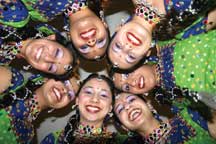 My uncle’s question took me by surprise. I was visiting Wellington, New Zealand, and had become used to hearing Polynesian names when it came to towns and lakes. My uncle’s question took me by surprise. I was visiting Wellington, New Zealand, and had become used to hearing Polynesian names when it came to towns and lakes.
I wanted to make sure I heard him properly.
“Did you say Khandallah? That sounds very Indian.”
My uncle chuckled. “Wait until you see it,” he replied.
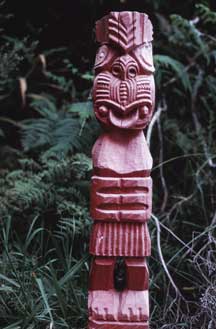 We hopped in his Mazda and made the 10-minute journey to Khandallah, a suburb of Wellington located on a mountain overlooking the city’s scenic bay. As we drove up the windy mountain road peppered with extravagant houses and strategically placed elevation lookouts, the street names began to change. We hopped in his Mazda and made the 10-minute journey to Khandallah, a suburb of Wellington located on a mountain overlooking the city’s scenic bay. As we drove up the windy mountain road peppered with extravagant houses and strategically placed elevation lookouts, the street names began to change.
Kamla Street. Ganges Court. Cashmere Avenue. Baroda Street. I was beginning to see why my uncle was so excited about showing me this mountaintop suburb.
As it turns out, Khandallah – which means “Resting Place of God” – was established in 1884 by former British Capt. James Andrew, who served in India and wanted to a a daily reminder of the imperial possessions he left behind. What Andrew probably did not anticipate was the migration of Indians to New Zealand nearly a century later, making a place like Khandallah more fitting of its name.
New Zealand, located in the far South Pacific and relatively isolated from the rest of the world, has become synonymous with the Lord of the Rings trilogy and its relatively undisturbed natural landscape. However, it’s also becoming home to a growing Indian community that has set its roots in big cities such as Auckland and Wellington and in small towns from Rotorua to Taupo.
Despite the signs of establishment and prosperity for the community as a whole, it has been a long road for the Indian population of New Zealand, one that started with a small community of servants and has blossomed into a diverse group covering the full spectrum of occupations in the North and South Island.
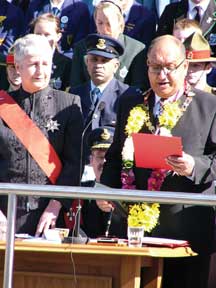 |
| Anand Satyanand takes the oath of office as New Zealand’s 19th Governor General on August 23rd, 2006 |
Like any other Indian expatriate community, the acculturation of Indo-Kiwis has been laden with pitfalls and questions of maintaining traditions versus assimilation. Many Indo-Kiwis continue to be proud of their ties to India yet resist the idea that they are any different from New Zealand’s majority population of pakeha – people who are not the native Maoris.
Culture shock
The Indian influence in New Zealand is not noticeable from outside the country, as New Zealand itself – owing largely to a laid-back lifestyle and relative neutrality in global politics – tend to tread lightly in international affairs.
Thanks to three distinctive migration periods, New Zealand’s Indian community is diverse in both its culture and its acculturation to the island nation. The nearly 100,000 Indo-Kiwis represent just 2 percent of the country’s overall population of 4.2 million.
Eight in 10 Indians live in the country’s two largest cities, Auckland and Wellington, with Auckland accounting for almost two-thirds. Both cities have more than their share of Indian restaurants and grocery stores that cater to more recent arrivals, but the myriad cultural centers located in almost every section of the metropolitan areas are a testament to the established community’s history and presence.
The Indian influence is perhaps most glaringly hreflected by the appointment in August 2006 by Queen Elizabeth II – who holds the title as monarch of New Zealand – of New Zealand-born Anand Satyanand as Governor-General of the country.
 The economic and social progress achieved by Indians, coupled with their increased acceptance in recent years, has made New Zealand an increasingly popular alternative to the United States, the United Kingdom and Australia. The economic and social progress achieved by Indians, coupled with their increased acceptance in recent years, has made New Zealand an increasingly popular alternative to the United States, the United Kingdom and Australia.
“There is just better opportunity,” says Hari Sreedhar who moved from Mumbai to New Zealand in 1989. “Why would I stay in India when I could make so much more of myself here?”
Suman and Naresh Puri of Wellington have a similar story. The couple came from Calcutta in 1987 for better professional careers, though Suman says their decision to move caught their peers by surprise.
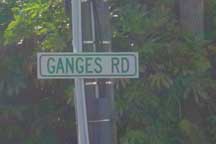 “Everyone was telling us, ‘Hey, you’re going the wrong way. America is the other direction,'” she jokes. “I think, 20 years later, people are finally starting to find out about this place.” “Everyone was telling us, ‘Hey, you’re going the wrong way. America is the other direction,'” she jokes. “I think, 20 years later, people are finally starting to find out about this place.”
The Puris and Sreedhar came to New Zealand at a time when very little was known about the country and when Indians were tripping over themselves for U.S. visas. Now, the migratory patterns have changed, thanks to a less welcoming climate in the United States and more economic opportunity down under.
And despite India’s recent economic upswing, Suman and Naresh, an analyst with Unisys, say they plan on staying and raising their two daughters in New Zealand.
 “This is home,” Suman says. “You know, we’ve been here all these years. You just get used to it after a while.” “This is home,” Suman says. “You know, we’ve been here all these years. You just get used to it after a while.”
The Puris are a lot like B. Ravi, who left Mumbai in the mid-1990s for a college teaching job in Wellington. He still holds his Indian citizenship, though New Zealand allows immigrants to naturalize after three years.
Ravi still reminisces about Mumbai, recollecting the densely packed roads and the smells emanating from roadside vendors on the way to his old job. But he has accepted New Zealand as his home, and both he and his wife Jayshree have established professional careers and their two daughters have lived the majority of their lives in New Zealand.
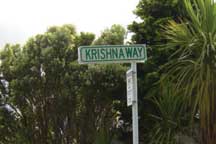 Jayshree Ravi waxes hreflectively about India and how it compares to her current home. “I do miss the cultural and religious aspects of India and often think of it,” she says. “However from a general perspective, New Zealand is a small country with a small economy. It is only a good stepping stone to get the international experience (without the stress) and enjoy life for a short while.” Jayshree Ravi waxes hreflectively about India and how it compares to her current home. “I do miss the cultural and religious aspects of India and often think of it,” she says. “However from a general perspective, New Zealand is a small country with a small economy. It is only a good stepping stone to get the international experience (without the stress) and enjoy life for a short while.”
Because New Zealand is tiny compared to India (the entire country’s population is only a third of Mumbai’s), she wonders if she and Ravi might be better off in their native country in the long run.
“From our perspective we may go back to India after retirement, but you never know,” she says. “Perhaps we may be put off by the environment and the bureaucracy and may not after all.”
In the meantime, the Ravis, like many of their fellow Indian expatriates in New Zealand, are now working to make sure that the next generation of Indo-Kiwis does not forget its Indian roots.
Living a balance
Indian immigrants have tried to ensure that their children are exposed to Indian culture on a daily basis, and with growing diversity among Indo-Kiwis, there is no scarcity of cultural offerings.
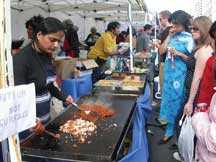 The majority of New Zealand’s Indian population is Hindu. For Hindus in the North Island, the religious and cultural centers in cities such as Auckland and Wellington are both keepers of tradition and the hub of social activities. The majority of New Zealand’s Indian population is Hindu. For Hindus in the North Island, the religious and cultural centers in cities such as Auckland and Wellington are both keepers of tradition and the hub of social activities.
On Saturdays, a large group of Hindus in the Wellington area gather for the recitation of mantras like the Vishnu Sahasranamam and the Hanuman Chalisa. One of the most popular cultural centers is the Bharat Bhavan, built in 1956 as a hall for Indian cultural activities.
Located near other Asian cultural centers in the aptly – or archaically – named Oriental Bay section of Wellington, Bharat Bhavan is part temple, part performance hall, part cafeteria and part Indian grocery and video rental store. Its multiple functions make it a veritable one stop for the community.
Though the center is primarily used by Gujaratis, who constitute about a quarter of Indians in New Zealand, other cultural groups consider this place home as well. South Indians congregate here for weekly bhajans and get-togethers.
 Other major cultural centers include the Kurinji Kumaran Temple in Wellington, the Bharatiya, Radha Krishna, Ram Krishna and Subramaniyam temples in Auckland, and the Wellington Gurdwara. Several mosques have also been erected in recent years to cater to a growing South Asian Muslim population. Other major cultural centers include the Kurinji Kumaran Temple in Wellington, the Bharatiya, Radha Krishna, Ram Krishna and Subramaniyam temples in Auckland, and the Wellington Gurdwara. Several mosques have also been erected in recent years to cater to a growing South Asian Muslim population.
Though there are a plethora of cultural options for Indians in New Zealand, many of them are worried that their children may end up becoming “too Kiwi,” a complaint echoed by parents of children born in New Zealand. They do, however, take heart in the solidarity they feel with the other Indo-New Zealanders.
For more than a century, Indians have persevered and maintained the strong sense of identity. While Capt. Andrew named a mountain top suburb after the India he so longed for, the Indians who followed him and subsequent generations have brought their culture and history along. Thousands of miles away in a tiny country with no continental affiliation, they remain committed to keeping a piece of India with them.
| Indian Migration to New Zealand
 Indians did not just migrate to New Zealand following the country’s tech boom in the 1990s, where companies such as agricultural giant Fonterra and tech powerhouses like Telecom and Vodafone began seeking the same Indian intellectual talent that had traditionally headed to the United States. Indians did not just migrate to New Zealand following the country’s tech boom in the 1990s, where companies such as agricultural giant Fonterra and tech powerhouses like Telecom and Vodafone began seeking the same Indian intellectual talent that had traditionally headed to the United States.
In fact, Indians arrived in New Zealand shortly after Capt. Andrew’s return. The first few came as indentured servants and laborers from Gujarat and Punjab. According to the Te Papa Museum of New Zealand, 46 Indians lived in New Zealand (all in the North Island) in 1896 and were listed as “pedlars (sic), squawkers and domestics.” In the country’s 1896 census, only one woman was identified among the early Indian population.
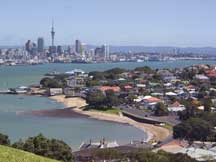 One reason Indians might have been tolerated by the white pakeha was because they were assumed to be a temporary workforce. Many Chinese came to the country in the 1800s to work in sulfur mines and in the country’s early manufacturing industry, though most returned to their native country after a few years. One reason Indians might have been tolerated by the white pakeha was because they were assumed to be a temporary workforce. Many Chinese came to the country in the 1800s to work in sulfur mines and in the country’s early manufacturing industry, though most returned to their native country after a few years.
So it might have come as a surprise, then, that the Indians decided to stay – and brought more of their family members with them. By 1920, the population had “swelled” to 2,000, most of whom worked in menial labor and domestic jobs.
 The 1920s also coincided with the popularity of Eugenics among Anglo-Saxon thinkers and politicians. The divine right of white superiority was widely accepted in New Zealand, where politicians and the press took aim at Indians for their “alien views of life and standards of conduct.” White New Zealanders imposed the same discriminatory restrictions upon Indians as they faced in South Africa. Indians were often denied employment, often resorting to communal living to save money. The 1920s also coincided with the popularity of Eugenics among Anglo-Saxon thinkers and politicians. The divine right of white superiority was widely accepted in New Zealand, where politicians and the press took aim at Indians for their “alien views of life and standards of conduct.” White New Zealanders imposed the same discriminatory restrictions upon Indians as they faced in South Africa. Indians were often denied employment, often resorting to communal living to save money.
Through all this, Indian New Zealanders remained steadfast in their desire to stay in the country. The New Zealand Indian Central Association was established in 1926, and by the end of World War II, Indians had established themselves in both the North and South Island as more than just laborers.
As the early Indians overcame racial and religious discrimination to make a home for themselves in New Zealand, even more arrived from India. The second wave comprised primarily of merchants and modest white-collar workers who settled in the country during the 1950s and 1960s.
By 1980, a large proportion of Indians in the country traced their origin to Gujarat, particularly the Surat region. However, the rise of the New Zealand economy, made the country more welcoming for a third wave of Indian expatriates, including those from Fiji.
Fiji-born Indians began migrating en masse following the 1987 coup and have steadily increased in population over the past 20 years. White-collar professionals seeking better employment opportunities during the 1980s and 1990s are a sizeable portion of more recent arrivals. |
| Kiwi Indians
The Indian population in New Zealand is estimated to top 100,000 presently, about 2 percent of the country’s total.
Indians are among the fastest growing ethnic groups, doubling between 1991 to 2001. They are the fourth largest group in New Zealand, after the Europeans, the native Maori and the Chinese.
Almost a quarter of Indians were born in New Zealand, the highest for any Asian group. However, half the Indian population is relatively new, arriving in the past five years. |
Kiwi Indian Profile
| HINDI |
46% |
| GUJARATI |
23% |
| PANJABI |
11% |
| TAMIL |
8% |
| URDU |
5% |
| TELUGU |
3% |
| BENGALI |
3% |
| < 14 YEARS |
26% |
| 15 – 19 |
9% |
| 20 -24 |
9% |
| 25- 34 |
18% |
| 35 – 44 |
18% |
| 45 – 64 |
17% |
| 65+ |
4% |
| COLLEGE DEGREE |
16% |
| HIGHER DEGREE |
8% |
| HINDU |
56% |
| CHRISTIAN |
16% |
| MUSLIM |
11% |
| OTHER |
10% |
| NO RELIGION |
6% |
| NEVER MARRIED |
25% |
| MARRIED |
61% |
| SEPARATED |
2% |
| DIVORCED |
35 |
| WIDOWED |
3% |
| AUCKLAND |
67% |
41544 |
| WELLINGTON |
14% |
8406 |
| WALKATO |
6% |
3600 |
| CANTERBURY |
3% |
2028 |
| BAY OF PLENTY |
3% |
2007 |
| MANAWATU – WANGANUI |
2% |
1353 |
| NORTH ISLAND |
95% |
| SOUTH ISLAND |
5% |
| URBAN |
98% |
| RURAL |
2% |
| NEW ZEALAND |
29% |
| ASIA |
34% |
| OTHERS |
37% |
| MANAGERIAL |
13% |
| PROFESSIONAL |
17% |
| TECHNICIANS |
10% |
| CLERICAL |
14% |
| SERVICE/SALES |
16% |
| AGRICULTURAL |
3% |
| TRADE |
5% |
| MACHINERY |
8% |
| ELEMENTARY |
5% |
| OTHER |
9% |
| RETAIL |
22% |
| MANUFACTURING |
11% |
| BUSINESS SERVICES |
11% |
| HEALTH |
8% |
| HOSPITALITY |
6% |
| EDUCATION |
6% |
| WHOLESALE |
6% |
| FINANCIAL |
5% |
| TRANSPORTATION |
4% |
| AGRICULTURE |
3% |
| GOVERNMENT |
3% |
| CONSTRUCTION |
2% |
| PERSONAL |
2% |
| COMMUNICATION |
1% |
| CULTURAL |
1% |
| OTHER |
8% |
| MEDIAN PERSONAL INCOME INDIANS |
$16,000 |
| NATIONAL |
$18,500 |
|


 My uncle’s question took me by surprise. I was visiting Wellington, New Zealand, and had become used to hearing Polynesian names when it came to towns and lakes.
My uncle’s question took me by surprise. I was visiting Wellington, New Zealand, and had become used to hearing Polynesian names when it came to towns and lakes.  We hopped in his Mazda and made the 10-minute journey to Khandallah, a suburb of Wellington located on a mountain overlooking the city’s scenic bay. As we drove up the windy mountain road peppered with extravagant houses and strategically placed elevation lookouts, the street names began to change.
We hopped in his Mazda and made the 10-minute journey to Khandallah, a suburb of Wellington located on a mountain overlooking the city’s scenic bay. As we drove up the windy mountain road peppered with extravagant houses and strategically placed elevation lookouts, the street names began to change.
 The economic and social progress achieved by Indians, coupled with their increased acceptance in recent years, has made New Zealand an increasingly popular alternative to the United States, the United Kingdom and Australia.
The economic and social progress achieved by Indians, coupled with their increased acceptance in recent years, has made New Zealand an increasingly popular alternative to the United States, the United Kingdom and Australia.  “Everyone was telling us, ‘Hey, you’re going the wrong way. America is the other direction,'” she jokes. “I think, 20 years later, people are finally starting to find out about this place.”
“Everyone was telling us, ‘Hey, you’re going the wrong way. America is the other direction,'” she jokes. “I think, 20 years later, people are finally starting to find out about this place.” “This is home,” Suman says. “You know, we’ve been here all these years. You just get used to it after a while.”
“This is home,” Suman says. “You know, we’ve been here all these years. You just get used to it after a while.” Jayshree Ravi waxes hreflectively about India and how it compares to her current home. “I do miss the cultural and religious aspects of India and often think of it,” she says. “However from a general perspective, New Zealand is a small country with a small economy. It is only a good stepping stone to get the international experience (without the stress) and enjoy life for a short while.”
Jayshree Ravi waxes hreflectively about India and how it compares to her current home. “I do miss the cultural and religious aspects of India and often think of it,” she says. “However from a general perspective, New Zealand is a small country with a small economy. It is only a good stepping stone to get the international experience (without the stress) and enjoy life for a short while.” The majority of New Zealand’s Indian population is Hindu. For Hindus in the North Island, the religious and cultural centers in cities such as Auckland and Wellington are both keepers of tradition and the hub of social activities.
The majority of New Zealand’s Indian population is Hindu. For Hindus in the North Island, the religious and cultural centers in cities such as Auckland and Wellington are both keepers of tradition and the hub of social activities. Other major cultural centers include the Kurinji Kumaran Temple in Wellington, the Bharatiya, Radha Krishna, Ram Krishna and Subramaniyam temples in Auckland, and the Wellington Gurdwara. Several mosques have also been erected in recent years to cater to a growing South Asian Muslim population.
Other major cultural centers include the Kurinji Kumaran Temple in Wellington, the Bharatiya, Radha Krishna, Ram Krishna and Subramaniyam temples in Auckland, and the Wellington Gurdwara. Several mosques have also been erected in recent years to cater to a growing South Asian Muslim population. Indians did not just migrate to New Zealand following the country’s tech boom in the 1990s, where companies such as agricultural giant Fonterra and tech powerhouses like Telecom and Vodafone began seeking the same Indian intellectual talent that had traditionally headed to the United States.
Indians did not just migrate to New Zealand following the country’s tech boom in the 1990s, where companies such as agricultural giant Fonterra and tech powerhouses like Telecom and Vodafone began seeking the same Indian intellectual talent that had traditionally headed to the United States. One reason Indians might have been tolerated by the white pakeha was because they were assumed to be a temporary workforce. Many Chinese came to the country in the 1800s to work in sulfur mines and in the country’s early manufacturing industry, though most returned to their native country after a few years.
One reason Indians might have been tolerated by the white pakeha was because they were assumed to be a temporary workforce. Many Chinese came to the country in the 1800s to work in sulfur mines and in the country’s early manufacturing industry, though most returned to their native country after a few years. The 1920s also coincided with the popularity of Eugenics among Anglo-Saxon thinkers and politicians. The divine right of white superiority was widely accepted in New Zealand, where politicians and the press took aim at Indians for their “alien views of life and standards of conduct.” White New Zealanders imposed the same discriminatory restrictions upon Indians as they faced in South Africa. Indians were often denied employment, often resorting to communal living to save money.
The 1920s also coincided with the popularity of Eugenics among Anglo-Saxon thinkers and politicians. The divine right of white superiority was widely accepted in New Zealand, where politicians and the press took aim at Indians for their “alien views of life and standards of conduct.” White New Zealanders imposed the same discriminatory restrictions upon Indians as they faced in South Africa. Indians were often denied employment, often resorting to communal living to save money.